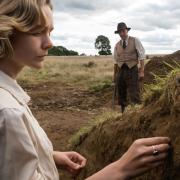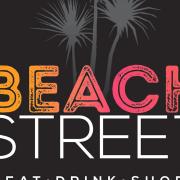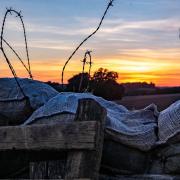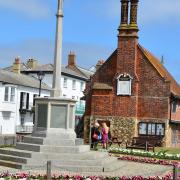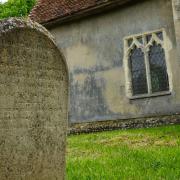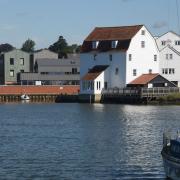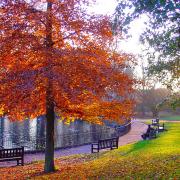A coastal haven, a place of subtle change, and a town of redoubtable women. Ian Collins rejoices in a great seaside destination
A coastal haven, a place of subtle change, and a town of redoubtable women. Ian Collins rejoices in a great seaside destination
Sixteen summers ago I bought a cottage in Southwold and that lucky break may well be the best move I ever made. Suffolk’s first resort changes far more than visitors think, but it remains a haven.
We all have our own Southwold, and that luxury of free choice in such a small place owes as much to what is missing as to the pleasures that mass here. The fast, instant and throwaway are moderated by the joys of lingering and savouring.
There is still so much to see and do – from the most magnificent church on the English coast, built by one 15th century generation and decorated by the next, to our fabulously recreated pier complete with bawdy water clock and surreal amusements by local genius Tim Hunkin.
Check out our excellent and now extended free museum in Victoria Street, and look in on my club: the Sailors’ Reading Room on the seafront. Be sure to visit our very best leisure centre (aka The Beach).
Then again, you may have an entirely different agenda. Southwold, both sociable and private, busy and empty, allows you to be yourself.
And yet, a lot of people get the wrong idea about Southwold. A town built around a working brewery and harbour – and awash with pubs, clubs, bars, cafes, wine stores, simple hostelries and fine hotels – is more likely to be merry than stuffy.
But there is always space for escape here and just to day-dream – to yield yourself up to what we call Southwold Zonk. We blame the ozone but it could be the beer.
All honour to our greatest benefactor, William Godyll who, in 1509, bequeathed the common to the town, and ensured our magical setting.
Southwold is almost an island, with borders of sea, river and stream, and a glorious green hinterland back to the distant clamour of the A12. It is a place for walking and cycling, as well as paddling, swimming and sailing.
On special days it’s even a place for climbing any of several beacon towers – though anyone who saw me on the BBC2 Coast programme walking around the cage of the lighthouse light, while talking about 1880s Southwold and the era of impressionist artist Philip Wilson Steer, should be warned. Only the engaging presence of presenter Alice Roberts made me forget that I suffer from vertigo.
I was one of the last people in England to be woken by the sound of working hooves, as the heavy-horse pullers of Adnams’ dray carts were moved from meadow to stable. That key note of local tradition was lost when the brewery opened a new distribution centre outside the town, freeing up two development sites inside it.
But in summer I still wake to the gleeful shrieks of swifts and I need walk only a very short distance to be surrounded by the blissful din of skylarks.
I’ve counted as many as 14 goldfinches on my courtyard birdfeeders in winter and countless starlings swarm overhead in autumn murmurations. Southwold is altogether a bird watchers’ paradise.
Even with the developmental onslaughts of recent decades it would be hard to ruin Southwold, though we have suffered a regrettable rash of twiddle-twaddle and fiddle-faddle in architecture inspired by a gimcrack Portmeirion and ignoring the noble plainness of the Suffolk coast.
While developers are occasionally able to get away with desecration I fought for years to extend my tiny unlisted 1830s harbourmaster’s cottage upwards by all of five feet and to frame a new first floor in a modest mansard roof.
Despite much local support I was blocked by Waveney planners. Finally I prevailed after huge cost.
Months later a document was commissioned by the district council to celebrate “buildings which are essential to the character of Southwold”. It included a picture of my cottage as amended.
Some Southwold friends manage without a car, piecing together a personal transport system based on foot, pedal, bus and train.
The key to this splendid system – all the more vital since we lost our petrol station (its demolition still blighting the entrance to Southwold though the approved apartment block would be even worse than the present blot) – is the ability to find everything you need in the High Street.
We are still blessed with two greengrocers, butcher, pet shop, post office, banks, building societies, antique shop, newsagents, chemists, electrical supplier, hardware store, fish and chip shop, craft shop and art gallery. And hurrah for Pam and her team in Bookthrift and Louise and her team in Nutter’s health food store, and one more cheer for the tasteful joys of Black Olive.
So how has such a varied and thriving town centre managed to do so well in these days of chain stores and modern retailing? We have been helped in this as in so much else by our sterling town council, hugely improving the mid-week markets after wresting control from wretched Waveney.
The loss of our last wetfish shop has been offset by a market van and fish stalls on Blackshore. With the recent revival of the Harbour pub, and the ongoing survival of an authentic Suffolk boat centre (Southwold having seen off both a Dutch marina and a boats-of-the-world museum), the harbour thrives while still awaiting major structural rescue.
There are endless threats – recently to the library and the tip, and now from a “Healthy Living” centre in Reydon (yet another big development opportunity), which would close our doctors’ surgery and threaten our chemists and cottage hospital.
The reckless pursuit of money must not wreck everything we value. While many second-home owners aim to move full time to Southwold as soon as they can, and contribute to the life of the town in the meantime, those who only buy to let undermine the community on which they depend.
Southwold has drawn amazingly interesting people – the rollcall of late local greats including rosegrower Jack Harkness, bandleader Jack Parnell and driftwood artist Margaret Mellis (the last of these the main reason for my moving here).
We still have PD James (or Baroness James of Holland Park and Southwold, if you prefer) and a great cast of local champions. Our town has always relied on redoubtable women.
May elections for the town council saw Sue Doy and Teresa Baggott topping the poll, both having served us brilliantly of late as mayor.
Teresa is the landlady of the Red Lion on South Green and Sue is her mum, a former waitress and pub cleaner. They are Southwold to their fingertips and I raise an (Adnams) toast to them and to all who keep this lovely town afloat.
Ian Collins is the author of Making Waves: Artists in Southwold. His latest book is on the painter John Craxton



